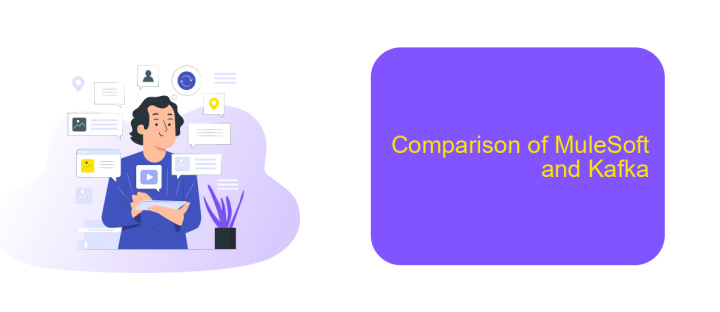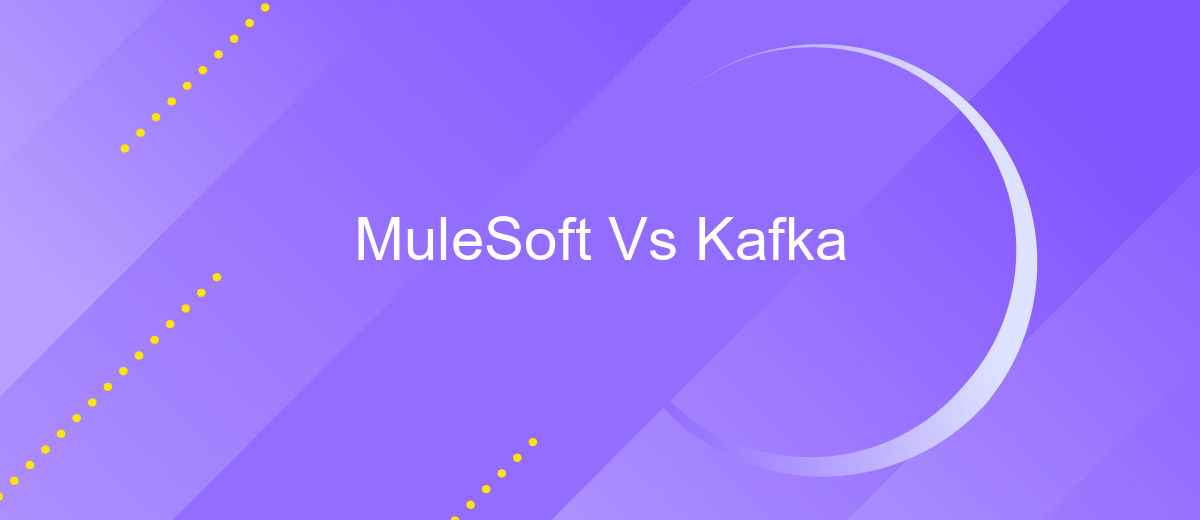MuleSoft Vs Kafka
In the realm of data integration and real-time processing, MuleSoft and Kafka stand out as powerful tools, each with distinct capabilities and use cases. MuleSoft excels in API-led connectivity and enterprise integration, while Kafka shines in high-throughput, low-latency data streaming. This article delves into the key differences, strengths, and ideal scenarios for deploying MuleSoft and Kafka in your technology stack.
Introduction
In today's rapidly evolving digital landscape, businesses are increasingly reliant on robust integration platforms to streamline their operations and ensure seamless data flow between various systems. Two prominent players in this arena are MuleSoft and Kafka. While MuleSoft is renowned for its comprehensive API management and integration capabilities, Kafka excels in real-time data streaming and event-driven architectures. Understanding the core differences and use cases of these platforms is crucial for organizations aiming to optimize their integration strategies.
- MuleSoft: Specializes in API management, connectivity, and orchestration.
- Kafka: Focuses on real-time data streaming and event processing.
- ApiX-Drive: Provides a user-friendly interface for setting up integrations without coding.
Choosing the right integration platform depends on various factors such as the specific needs of the organization, the complexity of the integration requirements, and the desired outcomes. While MuleSoft offers a comprehensive suite for managing APIs and integrations, Kafka is ideal for scenarios requiring high-throughput data ingestion and real-time analytics. Additionally, platforms like ApiX-Drive simplify the integration process, allowing businesses to connect their applications effortlessly. This section aims to provide a detailed comparison to help you make an informed decision.
MuleSoft Overview

MuleSoft is a leading integration platform that enables businesses to connect applications, data, and devices seamlessly. With its powerful Anypoint Platform, MuleSoft provides a unified solution for API management, design, and development. This platform offers a wide range of tools and services that simplify the process of creating and managing APIs, making it easier for organizations to integrate various systems and streamline their operations. MuleSoft's robust capabilities allow for real-time data synchronization, ensuring that all connected applications work harmoniously together.
One of the standout features of MuleSoft is its ability to support complex integration scenarios with ease. It provides pre-built connectors for numerous applications and services, reducing the time and effort required for integration projects. Additionally, MuleSoft's Anypoint Exchange offers a vast library of reusable assets, templates, and examples to accelerate development. For businesses looking to automate and manage their integrations effectively, services like ApiX-Drive can complement MuleSoft by providing additional tools for seamless data transfer and workflow automation, further enhancing the overall integration experience.
Kafka Overview

Apache Kafka is a powerful distributed event streaming platform used for building real-time data pipelines and streaming applications. It is designed to handle large volumes of data with high throughput and low latency, making it ideal for use cases such as log aggregation, real-time analytics, and event sourcing.
- Scalability: Kafka can easily scale horizontally by adding more brokers to the cluster.
- Durability: Data is replicated across multiple nodes, ensuring high availability and fault tolerance.
- Performance: Kafka is optimized for high-throughput and low-latency data processing.
- Flexibility: Supports a wide range of use cases, from messaging systems to complex event processing.
Kafka’s integration capabilities can be further enhanced using services like ApiX-Drive, which simplifies the process of connecting Kafka with other applications and services. ApiX-Drive offers a user-friendly interface for setting up and managing integrations without the need for extensive coding, making it accessible for businesses of all sizes. This allows organizations to leverage Kafka’s powerful features while ensuring seamless data flow across their tech stack.
Comparison of MuleSoft and Kafka

MuleSoft and Kafka are two powerful tools used in the realm of data integration and real-time data streaming. While both serve to facilitate data movement and transformation, they cater to different use cases and have distinct features.
MuleSoft is a comprehensive integration platform that allows businesses to connect applications, data, and devices seamlessly. It offers a wide range of connectors and tools for API management, making it ideal for orchestrating complex workflows. On the other hand, Kafka is a distributed streaming platform designed for high-throughput, low-latency data streaming. It excels in handling real-time data feeds and event-driven architectures.
- MuleSoft: API management, wide range of connectors, complex workflow orchestration
- Kafka: High-throughput data streaming, low-latency, event-driven architectures
In summary, choosing between MuleSoft and Kafka depends on your specific needs. MuleSoft is perfect for businesses looking to integrate various systems and manage APIs efficiently. Kafka is the go-to solution for scenarios requiring real-time data processing and event streaming. Tools like ApiX-Drive can further enhance these platforms by providing seamless integration capabilities, ensuring smooth data flow and automation.
Conclusion
In conclusion, both MuleSoft and Kafka offer robust solutions for integration and data streaming, catering to different needs and use cases. MuleSoft excels in providing a comprehensive integration platform with extensive API management capabilities, making it ideal for businesses looking to streamline their application networks. On the other hand, Kafka shines in handling real-time data streams, ensuring high-throughput and low-latency data processing, which is crucial for event-driven architectures.
Choosing between MuleSoft and Kafka ultimately depends on your specific requirements. For organizations seeking a versatile integration solution with strong API management, MuleSoft is a compelling choice. Conversely, if your focus is on real-time data processing and event streaming, Kafka stands out. Additionally, leveraging services like ApiX-Drive can further simplify the integration process, offering an efficient way to connect various applications and automate workflows without extensive coding. This flexibility ensures that businesses can adapt and scale their integration strategies effectively.
FAQ
What are the primary use cases for MuleSoft and Kafka?
Can MuleSoft and Kafka be used together?
How does MuleSoft handle data integration compared to Kafka?
What are the deployment options for MuleSoft and Kafka?
What tools or services can help with automating and integrating MuleSoft and Kafka?
Routine tasks take a lot of time from employees? Do they burn out, do not have enough working day for the main duties and important things? Do you understand that the only way out of this situation in modern realities is automation? Try Apix-Drive for free and make sure that the online connector in 5 minutes of setting up integration will remove a significant part of the routine from your life and free up time for you and your employees.

